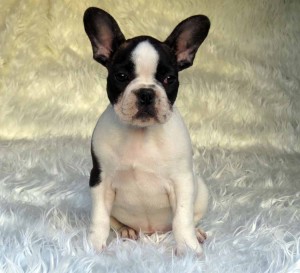How To Train Your Puppy – eBook Chapter 3
Kennel Training Your Puppy
As you begin the task of potty training your pup, you will need to train him to be in a crate or kennel. There are plenty of people who believe that a crate should be used to punish a misbehaved dog and this is simply untrue. Kennels should be viewed as a very own space for your puppy. The pup will grow to love the crate and spend time in it even when the door is wide open.
Training a dog to stay in a crate when you are not home or when you need to leave the dog unattended prevents a large amount of stress for you as well as the dog. As we mentioned earlier in this book, dogs are traditionally dwellers. They are comforted by the confinement of a small space and tend to seek it out. If your kennel is made of wire, it is recommended to cover it over with a blanket as that gives the dog the feel of being “covered up.” The purpose of the kennel is to provide comfort to the dog, while giving you an insurance policy that the dog won’t be getting into trouble while they are confined.
Crate training your puppy is also a great step towards avoiding negative behaviors such as digging or scavenging in garbage cans, chewing on non-approved items and climbing. It also prevents the dog from being able to hurt themselves through eating toxic non-food items and becoming trapped in a small dangerous place. Puppies are especially susceptible to injury and death due to their curiosity, small size and lack of depth perception. Crating a puppy is an important safety measure that must be taken.
The two types of crates that are available today are wire mesh and plastic. Both of these are great options. If you ever plan to travel with your puppy by air, you should consider purchasing an airplane approved crate, which is generally plastic. The wire mesh crates can be broken down for easy cleaning and moving.
When you first bring your puppy home he might not want to go into the crate. In order to bypass this snafu, you must make the crate appealing to the puppy by placing blankets, toys and treats inside. Using a simple command such as “inside” or “kennel up” repeatedly until the puppy walks into the crate. Once the puppy has gone inside the crate, you need to reward him with praise and treats.
It is perfectly normal for your puppy to cry and whine a bit once they get inside the crate. This isn’t because they want out of the crate, it’s because they want you inside with them. Dogs and puppies especially crave your constant attention, but it is extremely important that they learn to be comfortable by themselves in their own space. It is recommended that you go over and speak softly to comfort them, but don’t sit nervously beside the crate or let them out of the crate when they start whining. Doing that will only encourage the bad behavior and the dog ends up training you instead of the other way around.
A lot of people will choose to put a dog bed or blanket inside the crate to make it more comfortable, especially if you plan to crate your dog for a few hours at a time. As the puppy gets older, he may not require the bed or blanket, especially if you live in a warm climate.
One of the best ways to make sure your puppy is comfortable is to keep them near you as much as possible. The crate should be placed in an area of the home that is frequented by all members of the family. The family room is generally a good choice to place the crate during the day. Having your crate in a high traffic area will encourage the puppy to sit in there while the rest of the family is watching TV or having a meal. If having the dog crate in the living room isn’t aesthetically pleasing to you, consider placing a piece of wood over the top and cover it with a tablecloth.
Puppies should NEVER be left in the crate for more than eight consecutive hours. If this means that you need to take a break from work and come home to relieve the puppy, you must do this. It is extremely important to think about the time commitment involved in training before bringing the dog into your home to begin with. When puppies are put in a crate, they should go in happily, knowing that they are not in trouble and you will be back shortly to play with him.


